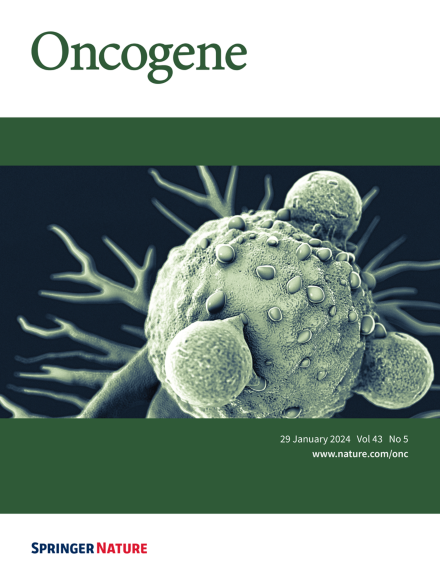m6A-driven NAT10 translation facilitates fatty acid metabolic rewiring to suppress ferroptosis and promote ovarian tumorigenesis through enhancing ACOT7 mRNA acetylation
IF 6.9
1区 医学
Q1 BIOCHEMISTRY & MOLECULAR BIOLOGY
引用次数: 0
Abstract
RNA epigenetic modifications have been implicated in cancer progression. However, the interplay between distinct RNA modifications and its role in cancer metabolism remain largely unexplored. Our study demonstrates that N-acetyltransferase 10 (NAT10) is notably upregulated in ovarian cancer (OC), correlating with poor patient prognosis. IGF2BP1 enhances the translation of NAT10 mRNA in an m6A-dependent manner in OC cells. NAT10 drives tumorigenesis by mediating N4-acetylcytidine (ac4C) modification of ACOT7 mRNA, thereby augmenting its stability and translation. This NAT10-ACOT7 axis modulates fatty acid metabolism in cancer cells and promotes tumor progression by suppressing ferroptosis. Additionally, our research identifies fludarabine as a small molecule inhibitor targeting NAT10, inhibits the ac4C modification and expression of ACOT7 mRNA. By using cell derived xenograft model and patient derived organoid model, we show that fludarabine effectively suppresses ovarian tumorigenesis. Overall, our study highlights the pivotal role of the NAT10-ACOT7 axis in the malignant cancer progression, underscoring the potential of targeting NAT10-mediated ac4C modification as a viable therapeutic strategy for this disease.

m6A 驱动的 NAT10 翻译通过增强 ACOT7 mRNA 乙酰化促进脂肪酸代谢重构,从而抑制铁变态反应并促进卵巢肿瘤发生。
RNA 表观遗传修饰与癌症进展有关联。然而,不同的 RNA 修饰之间的相互作用及其在癌症代谢中的作用在很大程度上仍未得到探讨。我们的研究表明,N-乙酰转移酶10(NAT10)在卵巢癌(OC)中显著上调,与患者的不良预后相关。IGF2BP1 以 m6A 依赖性方式增强了 OC 细胞中 NAT10 mRNA 的翻译。NAT10 通过介导 ACOT7 mRNA 的 N4-乙酰胞苷(ac4C)修饰,从而增强其稳定性和翻译,推动肿瘤发生。NAT10-ACOT7 轴调节癌细胞中的脂肪酸代谢,并通过抑制铁变态反应促进肿瘤进展。此外,我们的研究发现,氟达拉滨是一种靶向 NAT10 的小分子抑制剂,可抑制 ACOT7 mRNA 的 ac4C 修饰和表达。通过使用细胞衍生异种移植模型和患者衍生类器官模型,我们发现氟达拉滨能有效抑制卵巢肿瘤的发生。总之,我们的研究强调了 NAT10-ACOT7 轴在恶性肿瘤进展过程中的关键作用,凸显了靶向 NAT10 介导的 ac4C 修饰作为一种可行的治疗策略的潜力。
本文章由计算机程序翻译,如有差异,请以英文原文为准。
求助全文
约1分钟内获得全文
求助全文
来源期刊

Oncogene
医学-生化与分子生物学
CiteScore
15.30
自引率
1.20%
发文量
404
审稿时长
1 months
期刊介绍:
Oncogene is dedicated to advancing our understanding of cancer processes through the publication of exceptional research. The journal seeks to disseminate work that challenges conventional theories and contributes to establishing new paradigms in the etio-pathogenesis, diagnosis, treatment, or prevention of cancers. Emphasis is placed on research shedding light on processes driving metastatic spread and providing crucial insights into cancer biology beyond existing knowledge.
Areas covered include the cellular and molecular biology of cancer, resistance to cancer therapies, and the development of improved approaches to enhance survival. Oncogene spans the spectrum of cancer biology, from fundamental and theoretical work to translational, applied, and clinical research, including early and late Phase clinical trials, particularly those with biologic and translational endpoints.
 求助内容:
求助内容: 应助结果提醒方式:
应助结果提醒方式:


